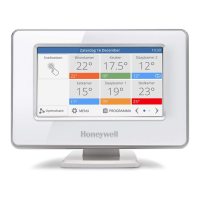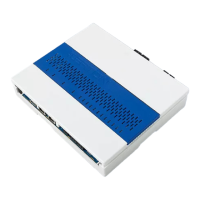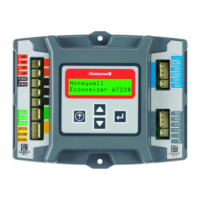ENGINEERING MANUAL OF AUTOMATIC CONTROL
CHILLER, BOILER, AND DISTRIBUTION SYSTEM CONTROL APPLICATIONS
373
Low pressure steam systems operate on pressures ranging from
0 psig to 15 psig. The steam main pressures are usually under 10
psig and the returns are vented to the atmosphere. To maintain
the return main pressures at 0 psig, an air vent releases the air
from the system when steam is present and allows it to return to
the system when steam is not present. These vents do not allow
steam to escape. A sealed chamber (bellows) within the vent
contains a volatile liquid which vaporizes or condenses when
temperature changes. This causes the valve to close when steam
is present preventing the discharge of steam from the system.
Since all of the air in a steam system may not be forced out
through the radiator vents, it is necessary to provide auxiliary
vents at the ends of the steam mains and in the returns to ensure
air removal from the system. These vents are larger than radiator
vents and are referred to as quick vents.
VARIABLE VACUUM RETURN SYSTEMS
In a variable vacuum steam system, also called a
subatmospheric steam system, the operating pressures range
from 20 in. Hg vacuum to 15 psig. The principle of water boiling
at reduced temperatures in a vacuum is the basis of a variable
vacuum steam system. In an atmospheric-return low-pressure
steam system, when the thermostat turns the burner off, boiling
ceases as soon as the temperature of the water drops to 212F.
In a variable vacuum system, boiling continues until the water
temperature drops to the boiling point of the vacuum pressure
created by the condensation of steam in the system. This means
that steam is continuously supplied to the radiator at a decreasing
temperature until the limit of induced vacuum is reached. Table
7 shows reduced heat output from radiators in a vacuum system.
To operate successfully, the system must be air tight. Variable
vacuum systems use nonreturn vents which allow air to leave
the system but none to return. A nonreturn vent is similar to the
low pressure steam vent with a small check disc that closes to
prevent inflow of air to the system when the pressure drops
below atmospheric.
The period of time that a variable vacuum system can operate
in the vacuum range is dependent upon the tightness of the
connections of the system. Once a variable vacuum system has
built up a vacuum, it is possible for the burner to operate at
frequent enough intervals to keep the system within the vacuum
range during mild and intermediate load conditions. Since a
low steam temperature is maintained, the radiator temperature
is low. By keeping the radiator warm for longer periods of time,
temperature stratification in the space is reduced.
Table 7. Heat Output versus Steam Pressure for Radiators, Convectors, and Coils.
Saturated Steam
Pressure Steam BTU/HR/EDR
Typical Steam Coil
a
With 40F Entering Air
PSIG Temp, ˚F Radiators
b
Convectors
c
MBH
d
10 239.4 286 288 111.0
5 227.1 262 259 104.5
4 224.4 254 250 103.2
3 221.5 247 242 101.6
2 218.5 240 235 100.0
1 215.3 233 228 98.2
0 212.0 226 221 96.2
2 in. Hg 208.5 216 211 94.5
4 in. Hg 204.8 209 204 92.0
6 in. Hg 201.0 199 194 90.2
10 in. Hg 192.2 182 178 —
15 in. Hg 178.9 158 151 —
20 in. Hg 161.2 125 111 —
a
2 row steam distributing coil, 7 fins per inch, 500 fpm face velocity, and 2.4 sq ft face area
b
75F Room temperature
c
70F Inlet temperature
d
1000 Btu/hr

